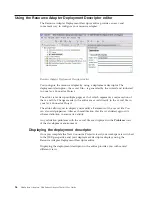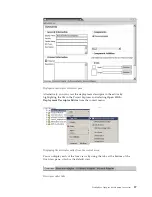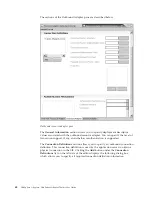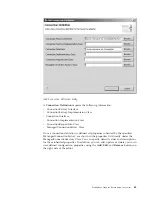
v
A full, working implementation, as opposed to the CCI Record model that
simply defines interfaces that must be implemented by the adapter developer.
v
A built-in support for tracking changes at both the object and property levels,
which allows for improved efficiency in processing and reduced bandwidth
requirements for exchanging data.
v
The business object data model is based upon the open-standard service data
object (SDO) model that is supported by IBM and others (visit www.eclipse.org
for more information).
v
The business object data model aligns well with the larger WebSphere
service-oriented architecture (SOA) strategy which, going forward, will better
enable interpretability with other WebSphere-based applications.
Relationship of business objects to service data objects
At the technical level, the WebSphere business object model maps directly to the
service data object (SDO) model: a WebSphere business graph and business object
correspond to an SDO data graph and data object.
A business graph is a top-level structure that defines a single child business object
which can itself contain zero or more child business objects.
Using a business graph optional. Use it to provide a
change summary
for applying a
delta updates to hold metadata about its child business objects.
Business graph
After-images versus deltas
Two distinct types of business objects, after-image and delta, are used to convey
different kinds of information.
After-Image business objects can be thought of as a snapshot of the data in time;
they reflect how the EIS entity looks (for inbound events) or is expected to look
(for outbound requests). An after-image business object should represent the entire
entity structure in the EIS. For example, if an ORDER object with UPDATE verb is
sent to the adapter, and the order has two ORDER_LINE children, the object in the
EIS should be modified to reflect the input; if the EIS’s representation of that object
had only one ORDER_LINE, it will have two after the processing has completed.
Delta business objects reflect the specific changes that have occurred (for inbound
events) or that the user wants affected (for outbound requests) in the EIS. Each
business object contains a changeSummary structure that can store all the pending
70
WebSphere Adapters: WebSphere Adapter Toolkit User Guide
Содержание WebSphere Adapters
Страница 1: ...WebSphere Adapters WebSphere Adapter Toolkit User Guide Version 6 Release 2 Version 6 Release 2...
Страница 2: ......
Страница 3: ...WebSphere Adapters WebSphere Adapter Toolkit User Guide Version 6 Release 2 Version 6 Release 2...
Страница 6: ...iv WebSphere Adapters WebSphere Adapter Toolkit User Guide...
Страница 211: ...7 Start UTC using the Run universal test client option WebSphere Adapter development overview 205...
Страница 220: ...214 WebSphere Adapters WebSphere Adapter Toolkit User Guide...
Страница 224: ...218 WebSphere Adapters WebSphere Adapter Toolkit User Guide...
Страница 225: ......
Страница 226: ...Printed in USA...
















































